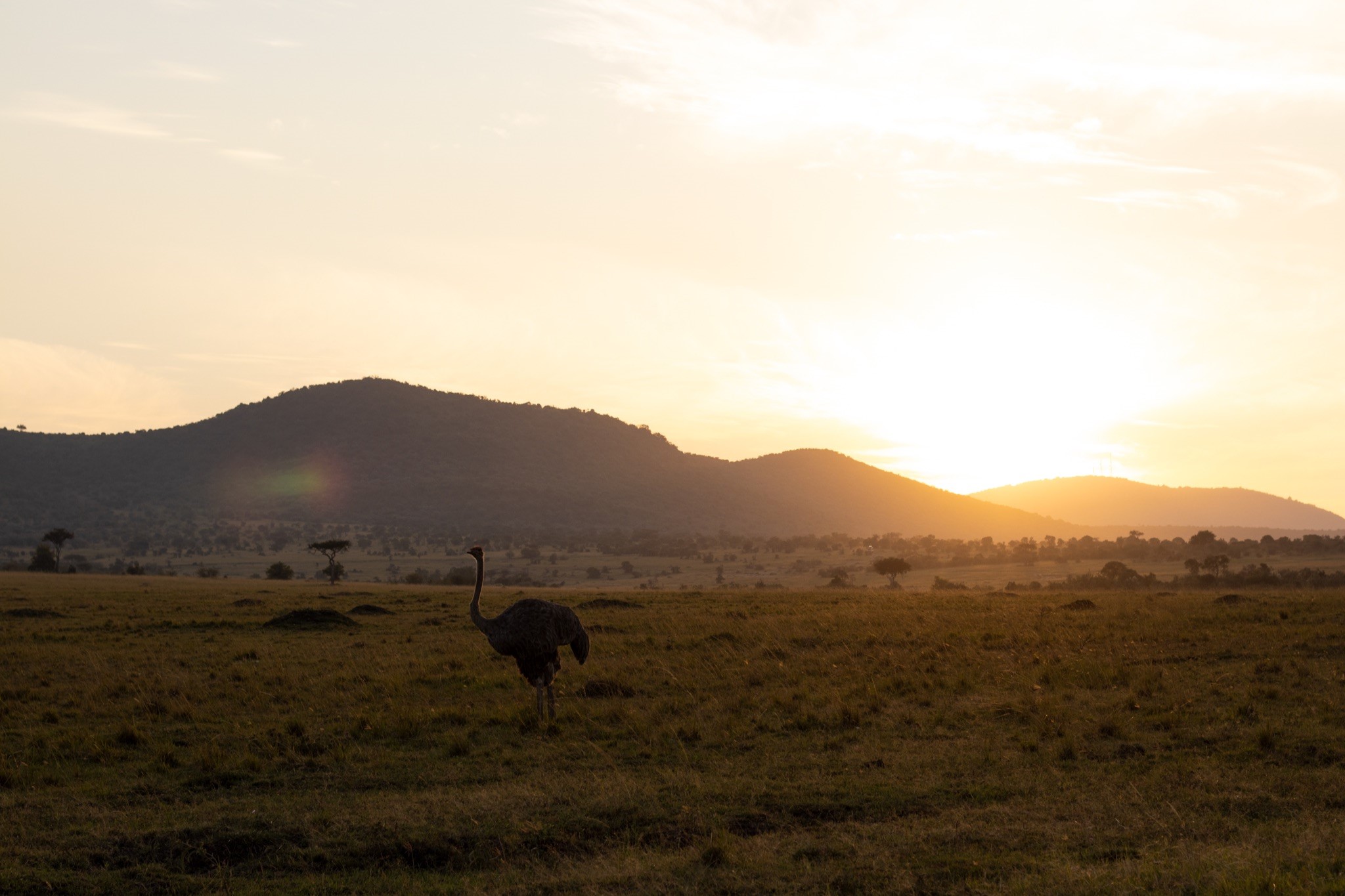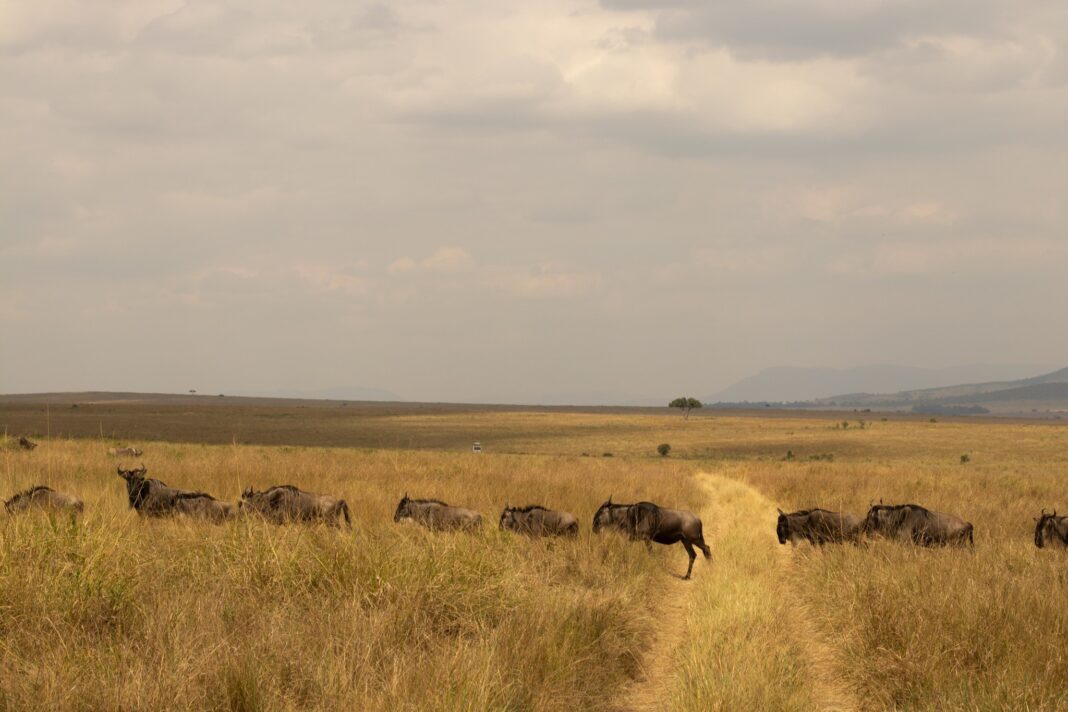Kenya’s wildlife is amongst the richest and most diverse on the African continent. Each year, the country’s national parks attract millions of domestic and international tourists. Kenya is home to not only Africa’s big five, which includes lions, leopards, buffalo, elephants, and black rhino but also to thousands of other species.
The country is also where the world’s largest migration of wildlife takes place with millions of wildebeest, accompanied by large numbers of zebra and gazelle traveling from Tanzania to the Maasai Mara National Reserve in the south of Kenya.
Sadly, however, the loss of biological diversity is one of the major threats facing Kenya. Over the last century, Kenya’s population has grown significantly, from just 2.9 million in 1928 to around 49 million today. With limited space, people who rely on farming often have no choice but to covert wildlife habitat into farm fields.
Furthermore, for some tribes hunting wild animals is part of their culture. They do not see this tradition as anything harmful but, in reality, it represents a threat to wildlife species.
The need for conserving wildlife is, therefore, clear. There are many ways to preserve the environment, and, what can come as a surprise to some, sport is one of them.
Sport helps collect funds for conservation projects
Sport brings people from different countries and cultures together. Sporting events create a sense of community and allow people to connect despite normally living on opposite sides of the world.
Sport can also be used to raise awareness about important matters such as wildlife conservation and to inspire people to contribute to protecting the environment.
Sports tourism and conservation come together, for example, during the annual Lewa Safari Marathon. During the event, participants run through a wildlife conservancy, getting the chance to admire Kenya’s iconic wildlife. Over the years, the marathon has raised almost $8 million for conservation projects across the country.
The Lewa Safari Marathon might be the best-known event of such type but it is not the only one.
The Rhino Charge is an annual off-road 4×4 competition that raises funds to protect Kenya’s mountain range ecosystems. The Last Male Standing Rhino Cup is a three-day-long cricket tournament that aims to collect money for protecting the rhino in Kenya.
Finally, the Maralal International camel Derby is a camel race that attracts local and international competitors and spectators, including farmers, ranchers, and regular tourists. The goal of the event is to educate pastoral communities about how they can use camels to combat environmental degradation.
These are just several examples but sport has truly become an important part of not only the tourism industry but also the conservation efforts in Kenya.
Sport motivates the locals to preserve Kenyan wildlife
Sport is used not only to encourage international visitors to contribute to conservation efforts but also serves to educate local communities about the importance of safeguarding Kenya’s nature.
The long-held Maasai tradition involves ‘hunting lions as a mark of manhood, bravery, and prestige’, the Big Life Foundation explains. The ritual is a part of the coming of age ceremony and an important part of the Maasai culture.
Regrettably, however, it leads to decreasing the numbers of this already endangered species. Hence, to raise awareness about the need to protect lions, the Maasai Olympics have been introduced.
During the event, which happens every two years, Maasai warriors compete in six sports categories, namely jungu and javelin throwing, high jump, as well as 200m, 800m, and 5,000m races. If the participants win, they receive medals, cash allowances, and recognition.
The event encourages traditional Kenyan communities to move away from killing animals and engage in conservation instead. Sport offers them an alternative to the harmful practice of killing lions and opens their eyes to the benefits of conservation.

Since the initiative was first launched, the rate of killing lions has gone down almost to zero’, said David Rudisha, Kenyan Olympic champion.
Preserving Kenya’s wildlife is vital
There are 24 national parks in Kenya with Maasai Mara being the most frequently visited one. The reserve is so spectacular that its ecosystem has been classified as one of the ‘Seven Natural Wonders of Africa.’

Even world-class athletes do not remain indifferent to Kenya’s stunning landscapes and wildlife. In June, Kenya hosted the World Rally Championship. During the event, the drivers passed through the Oserengoni Wildlife Conservancy where they could admire giraffes, zebras, buffalos, and lions during and after the race.
Many of the rally drivers decided to explore other national parks in Kenya as well and expressed their astonishment at how beautiful the country’s nature is.
Taking part in a safari is an unforgettable experience and a highlight of most people’s trips to Kenya. Conserving Kenyan wildlife is crucial to ensure that future generations can also enjoy the spectacular views of animals in their natural habitat.
About the author:
Katarzyna Rybarczyk is a Political Correspondent for Immigration Advice Service, an immigration law firm based in the UK but operating globally. She has recently spent a month volunteering with vulnerable communities in Kenya.


